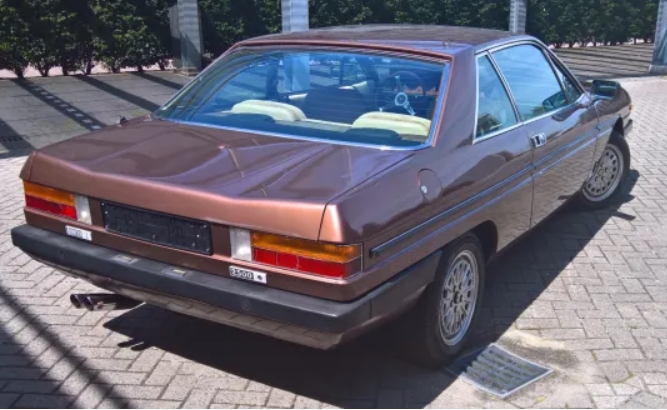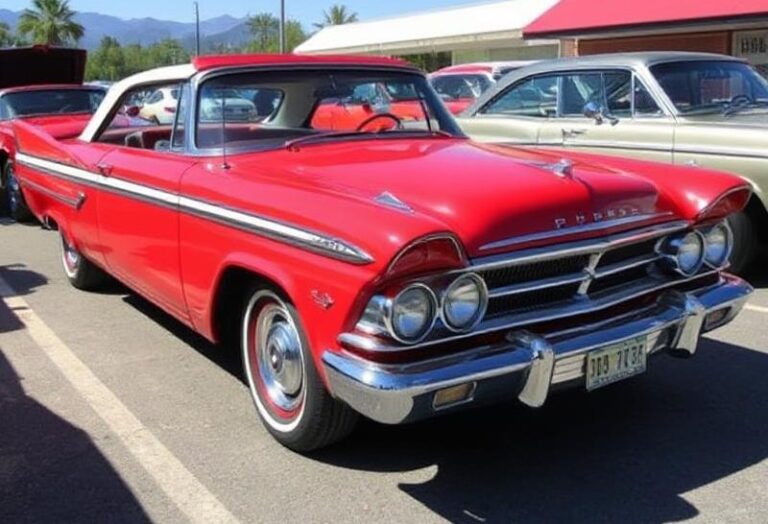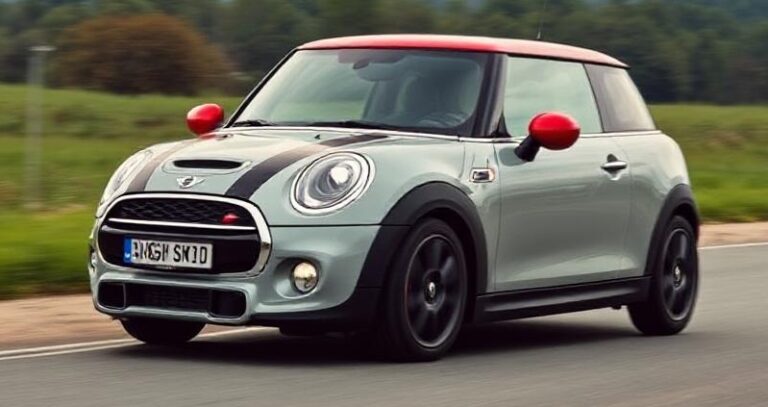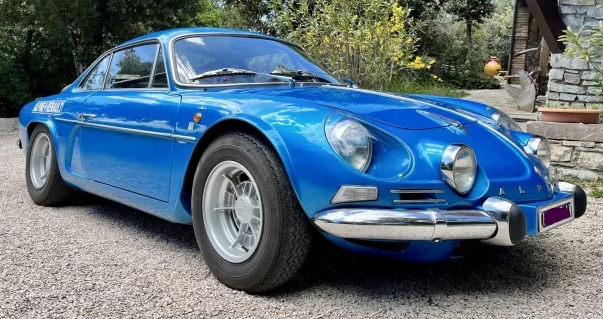The Little Giant: The Complete Evolution of the Lancia Fulvia
In the pantheon of automotive legends, few cars embody the spirit of sophisticated engineering, understated elegance, and giant-slaying motorsport prowess quite like the Lancia Fulvia. Born from a company renowned for its meticulous, often audacious, engineering solutions, the Fulvia was more than just a successor to the Appia; it was a statement. From its introduction in 1963 to its final bow in 1976, it evolved from a refined family saloon into a world rally champion, securing its place as one of the most beloved and significant Italian cars ever produced. This is the story of its evolution.
The Genesis: A Tradition of Innovation (1963)
When the Lancia Fulvia Berlina (saloon) debuted at the 1963 Geneva Motor Show, it arrived with a heavy weight of expectation. Lancia’s reputation, built on decades of technical innovation like the first V6 engine and monocoque chassis, demanded something special. The Fulvia delivered.
Designed by Antonio Fessia, it was a technical marvel for its class. It broke from Lancia’s rear-wheel-drive tradition, adopting a modern front-wheel-drive layout. But the true masterpiece lay under the bonnet. At its heart was an entirely new, longitudinally-mounted, narrow-angle V4 engine. Tilted at a 45-degree angle to reduce height and canted to one side, this compact jewel of an engine, designed by Zaccone Mina, was a hallmark of Lancia’s uncompromising approach. It featured a single cylinder head covering both banks of cylinders, a complex but beautifully efficient design.
Paired with disc brakes on all four wheels (a rarity for a small car at the time) and independent front suspension, the Fulvia was a showcase of advanced, thoughtful engineering wrapped in a sober, elegant, three-box saloon body.
Series 1: The Foundation (1963–1969)
The first series of the Fulvia can be seen as the period of establishment and diversification, where the platform’s true potential was gradually unlocked.
Berlina (1963-1964): The initial model, known simply as the Normale, was powered by a 1091cc V4 producing a modest 58 bhp, mated to a 4-speed column-shift manual gearbox. It was a comfortable, well-built, and technically advanced saloon, though not particularly fast.
Berlina 2C (1964-1969): The first performance upgrade arrived a year later. The “2C” stood for due carburatori (two carburetors). Equipped with twin Solex carburetors, the 1091cc engine’s output was boosted to a more spirited 71 bhp, giving the saloon the performance to match its sophisticated chassis.
Coupé (1965-1969): The game changed entirely in 1965 with the introduction of the Fulvia Coupé. Styled by a young Piero Castagnero at the Lancia Style Centre, it was a masterpiece of clean, elegant lines. Built on a shortened Berlina floorpan, its lightweight, pillarless design, with its airy glasshouse and perfect proportions, was an instant classic. It launched with a larger 1216cc version of the V4, producing 80 bhp. Lighter and more agile than the Berlina, the Coupé was the true driver’s car of the family.
Sport Zagato (1965-1970): If the Coupé was elegant, the Sport was pure Italian exotica. Lancia commissioned the famed coachbuilder Zagato to create an aerodynamic, competition-focused variant. The result was a stunningly unconventional fastback with a lightweight aluminium body, designed by Ercole Spada. The first models used the Coupé’s 1216cc engine. The early cars featured peculiar side-opening bonnets and were hand-built, making them true rarities.
Berlina GT & GTE (1967-1969): The saloon continued to evolve. The GT, introduced in 1967, used the 1216cc engine from the early Coupé. This was soon followed by the GTE in 1968, which received the more powerful 91 bhp, 1298cc engine, finally giving the saloon performance that could be considered truly brisk.
Coupé Rallye 1.3 & 1.3 S (1967-1969): The Coupé’s engine capacity grew to 1298cc, creating the Rallye 1.3 with 87 bhp. The ultimate iteration of the first-series Coupé was the Rallye 1.3 S, which, thanks to higher compression and revised camshafts, produced a potent 92 bhp. It was this model that began to build Lancia’s formidable reputation in rallying.
Sport 1.3 & 1.3 S (1968-1970): The Zagato-bodied Sport followed the Coupé’s engine progression, receiving the 1298cc engine in both standard (87 bhp) and “S” (92 bhp) tune. To reduce costs, the bodies were later made of steel, though the bonnet, doors, and spare wheel hatch often remained aluminum.
Coupé Rallye 1.6 HF “Fanalone” (1969-1970): The legend was born. The “HF” stood for High Fidelity, the name of Lancia’s privateer racing team. This was a stripped-down homologation special built for one purpose: to win rallies. It featured a new, powerful 1584cc V4 engine producing around 115 bhp in road trim (and far more for competition). Its most distinctive feature was its enormous inner headlamps, earning it the Italian nickname “Fanalone” (big lamps). With plexiglass windows, an aluminium bonnet and doors, no bumpers, and a spartan interior, it was a raw, uncompromising racing machine for the road.
The Fiat Takeover and The Second Series (1970–1976)
In late 1969, a financially struggling Lancia was acquired by Fiat. While this marked the beginning of the end for Lancia’s cost-no-object engineering philosophy, the Fulvia was allowed to continue its evolution. The Second Series, launched in 1970, represented a period of rationalisation and refinement. All models now featured a superb dog-leg 5-speed manual gearbox and more powerful Girling brake systems.
Berlina (1969-1972): The saloon received a subtle facelift with a new grille and rear lights. It was offered with the 1298cc engine, and production continued until 1972, marking the end of the saloon’s run.
Coupé 1.3 S (1970-1973): The mainstream Coupé was heavily updated. It featured a new, taller grille, a revised interior with a new dashboard, and a general move towards more standardized components. While the 1298cc engine was largely unchanged, the new 5-speed gearbox transformed the driving experience. The doors were now made of steel for cost and safety reasons, making the car slightly heavier than its predecessor.
Sport 1.3 S (1970-1972): The Zagato Sport received the same mechanical and interior updates as the Coupé, including the 5-speed gearbox. Production of this beautiful and quirky model ceased in 1972.
Coupé 1600 HF (1970-1973): The road-going version of the Fanalone was civilised for the Second Series. Often referred to as the “Lusso” (Luxury), it retained the fantastic 1584cc engine but came with steel body panels, bumpers, and a more comfortable interior with plush seats and sound deadening. It was the ultimate Fulvia grand tourer – blisteringly fast, with the handling to match, but comfortable enough for daily driving.
Sport 1600 (1971-1972): For a brief period, the Zagato Sport was fitted with the 1.6-litre HF engine, creating the fastest and most powerful production Fulvia of all. With its superior aerodynamics and potent engine, it was a true 120 mph car, and today is the most sought-after and rarest of all the Sport models.
The Final Act: Commemoration and Conclusion
By the mid-1970s, the Fulvia platform was showing its age, and Lancia’s competition focus had shifted to the radical, mid-engined Stratos. However, the Fulvia had one last chapter.
Coupé Montecarlo (1972-1973): To celebrate Sandro Munari’s legendary victory at the 1972 Monte Carlo Rally, Lancia created a special edition. Based on the 1.3 S, the Montecarlo was a cosmetic tribute to the works rally car. It featured a matte black bonnet and boot lid, no bumpers, and flared wheel arches reminiscent of the 1.6 HF. It was a visual celebration of the car’s greatest motorsport triumph.
Coupé 3 (1974-1976): The final iteration of the Fulvia was the Coupé 3. Essentially a re-trimmed and updated Coupé 1.3 S, it featured a new matte black grille, white-faced instruments, a laminated windscreen, and headrests integrated into newly designed seats. It was available in two versions: the standard Coupé 3 and the commemorative Montecarlo, which retained its unique rally-inspired styling. Production of this final model continued until 1976, bringing the Fulvia’s remarkable 13-year journey to a close.
.

.
The Legacy
The Lancia Fulvia’s evolution tells a story of a company at the peak of its creative powers. It began life as an exceptionally well-engineered, if somewhat sedate, saloon. But the inherent quality of its design—the brilliant V4 engine, the balanced front-wheel-drive chassis, and its lightweight construction—provided the perfect canvas. The elegant Coupé turned it into a desirable sports car, the exotic Zagato made it a coachbuilt special, and the formidable HF transformed it into a world-beating rally legend.
Its crowning achievement, winning the 1972 International Championship for Manufacturers (the forerunner to the WRC), cemented its place in history. Against more powerful rivals like the Porsche 911 and Alpine A110, the little Fulvia’s agility, traction, and sheer tenacity proved that clever engineering could triumph over brute force.
Today, the Lancia Fulvia is revered not just for its beauty or its racing pedigree, but as a symbol of an era when Lancia dared to be different, prioritizing engineering excellence above all else. It is a little giant of automotive history.







